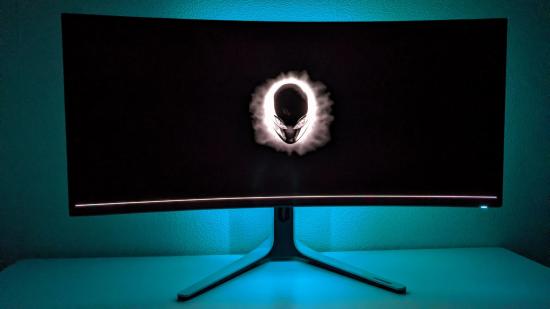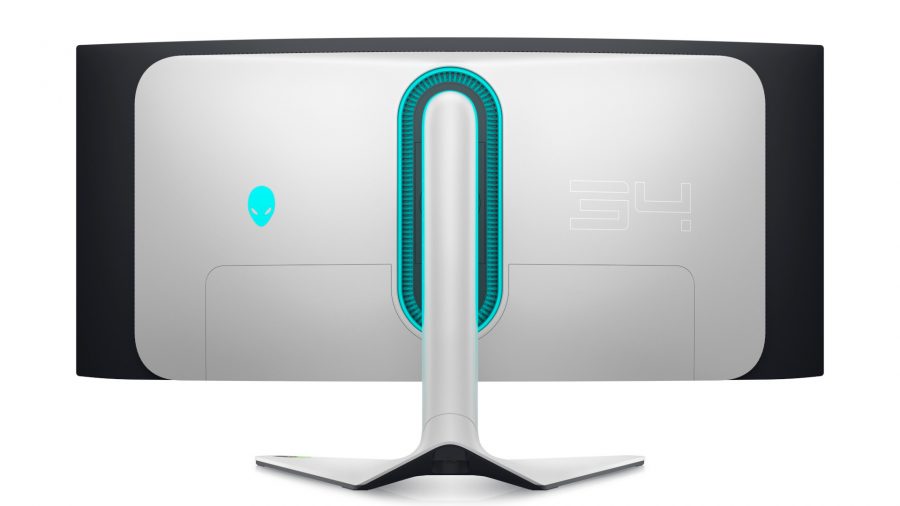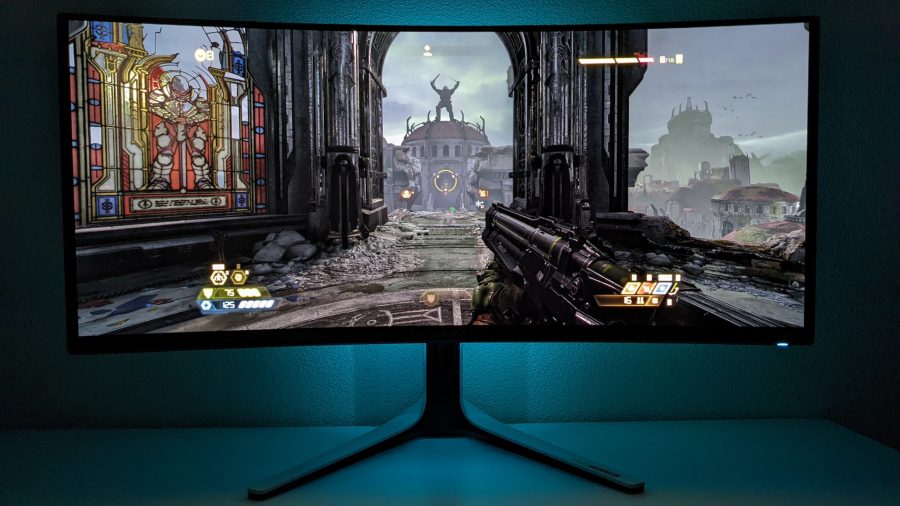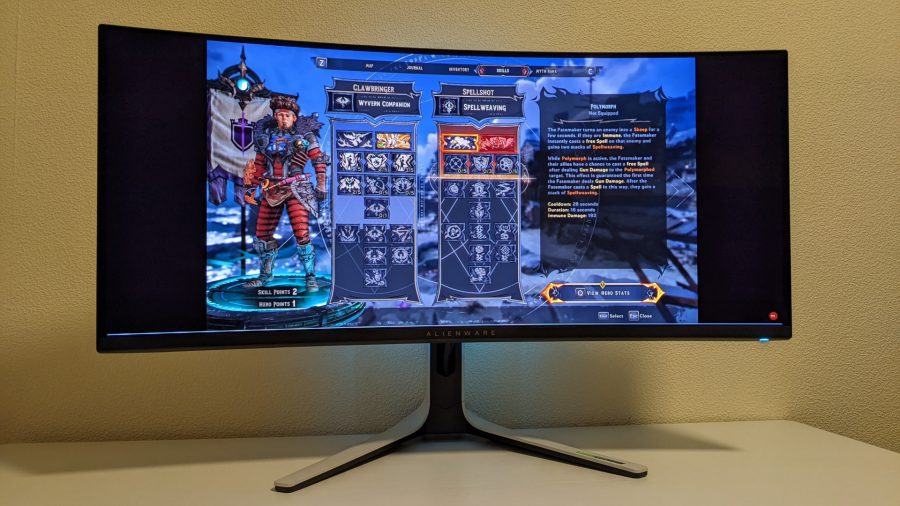Our Verdict
There's no other gaming monitor I'd rather use than the Alienware AW3423DW, but the kinks that come with using an ultrawide display in addition to its premium price point may understandably put some off
- Value is incredible
- Color range out guns many IPS panels
- Super responsive
- Poor I/O design
- Heavy
I’ve been waiting a long, long time for a display like the Alienware AW3423DW gaming monitor to arrive on the market. For several years now, even the very best PC screens have left me wanting with their dime-a-dozen IPS and VA panels, while all I wanted was an LG OLED in a size suitable for my desk. Now, after having spent just over a month with this ultrawide QD-OLED display, I can happily report that the future of gaming panels looks bright, very bright.
Before I dive into what makes the QD-OLED panel inside the Alienware AW3423DW gaming monitor such a game changer, let’s take a moment to talk about its design and other general features. Assembling the display is a toolless and fairly straightforward affair, requiring you to combine its big boomerang-style feet with its surprisingly heavy stand, before slotting on the display.
While putting it together was easy, shifting the AW3423DW from its box to my desk was a touch more difficult. Its 10kg weight doesn’t sound like much of a problem, but the 34-inch ultrawide panel is 7kg itself, meaning it can feel unwieldy to handle. This isn’t an issue once you’ve got it where you want it, but it’s certainly worth keeping this in mind and exercising an extra degree of caution when moving the monitor.
On the subject of cables, the Alienware AW3423DW features a good amount of connectivity. Turning the monitor around, you’ll find four USB 3.2 Gen1 Type-A ports, in addition to one DisplayPort 1.4 and two HDMI 2.0 inputs. It’s a minor gripe, but I wish that Alienware had opted to provide two DisplayPort connections instead, as HDMI 2.0 isn’t capable of running the panel at its native resolution and refresh rate. Alternatively, HDMI 2.1 could solve this problem, but would undoubtedly push the price of the display up further.
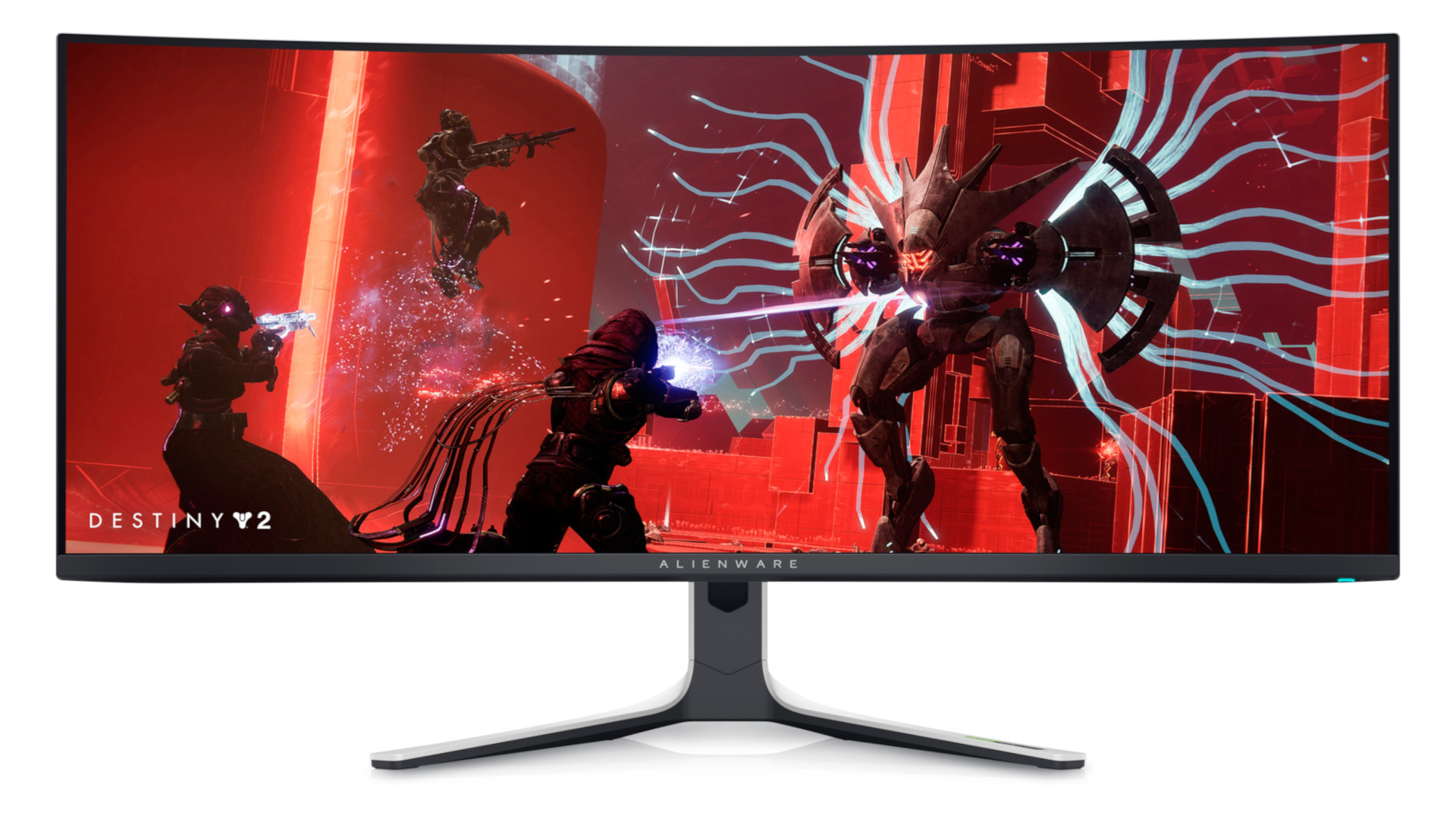 Check Prices
Check Prices
| Alienware AW3423DW | Samsung Odyssey Neo G9 | Asus ROG PG32UQX | LG C2 | |
| Panel | QD-OLED (34-inch) |
Mini LED VA (49-inch) |
Mini LED IPS (32-inch) |
WRGB OLED (42-inch) |
| Resolution | 3440×1440 | 5120×1440 | 3840×2160 | 3840×2160 |
| Refresh rate | 175Hz | 240Hz | 144Hz | 120Hz |
| Response time | 0.1ms | 1ms | 4ms | 0.1ms |
| HDR | DisplayHDR True Black 400 | HDR10 | DisplayHDR 1400 | Dobly Vision HDR10 HLG |
| MSRP | $1,300 | $2,500 | $3,700 | $1,400 |
After plugging everything in, I excitedly booted up my gaming PC, turned on the monitor, and sat there with bated breath. And then, as I booted into Windows, I grinned as the QD-OLED display seemingly breathed new life into the colours of my desktop wallpaper, with wonderful vibrancy and stark contrasts that are simply out of reach for other screen technologies.
For those unfamiliar with QD-OLED, it describes a display that uses a quantum dot (QD) layer to enhance its organic LEDs (OLED). In a nutshell, by combining these two technologies, you inherit all the advantages of OLED such as per-pixel illumination and a theoretical infinite contrast ratio while eliminating two of its biggest drawbacks: low peak brightness and burn-in. Rather than diluting colours with a white sub-pixel like you’ll find on OLED TVs, QD-OLEDs instead use the quantum dot layer to convert blue light into the desired colours.
None of this was lost on me as I gazed upon the HDR hellscapes of Doom Eternal. The Alienware AW3423DW painted the ruby red blood, bodies, and giblets of my demonic enemies in shades I didn’t know were possible on a gaming monitor. The rest of the game’s colour palette positively popped, too, and has never looked better to my eyes.
This is in part due to the stonkingly wide colour gamut of the AW3423DW, which covers 99.3% of the DCI-P3 colour space and its DisplayHDR True Black 400 certification. However, it isn’t until you play something with pitch black shadows like Resident Evil Village or Shadow of the Tomb Raider that you appreciate how transformative the screen’s contrast ratio is for games.
Gone are the washed out greys we’ve become accustomed to on IPS and (to a degree) VA panels, and in their place is pitch black. Much as this adds to the ambience of a horror game, it allows the 1,000 nits peak brightness to shine too as stark contrasts amplify the perceived brightness of highlights such as flames, torches, and the sun.
Suffice to say, simply looking at games in both SDR and HDR on the Alienware AW3423DW is awesome in every sense of the word. That said, I haven’t even talked about how great it feels to play with a 0.1ms response time, or how the 1,800R curved 21:9 panel made open world games like The Witcher 3 or Red Dead Redemption feel so much larger and immersive. I honestly can’t recommend anything else other than the AW3423DW for anyone who’s interested in HDR gaming on PC.
While I wish I could continue to unabashedly sing the praises of the AW3423DW’s screen, it does have some flaws. Even in 2022, support for ultrawide resolutions isn’t a given, with games like Elden Ring only supporting 16:9 options, resulting in large black bars appearing alongside the image. This doesn’t bother me too much, as someone who watches a fair amount of 4:3 content, but it’s certainly something to bear in mind.
However, what does bother me is how severely the contrast ratio of the AW3423DW suffers when it’s used in a brightly lit room. The anti-reflective coating does help to keep pesky reflections at bay, but it comes at the cost of diluting the display’s colours. This is particularly noticeable when looking at darker shades of colour or black, which become more washed out and grey when light is shone directly on the display. To be clear, it still looks great, but it looks far more impressive in a light controlled room (as does all HDR content).
Finally, let’s talk price. The Alienware AW3423DW is an expensive gaming monitor at $1,300 USD but you may be surprised to learn that it actually offers shockingly good value. Looking at its competitors, it’s significantly cheaper than the Samsung Odyssey Neo G9 and Asus ROG PG32UQX, and even beats the 42-inch LG C2 by a cheeky $100. This is even more surprising considering that this is the first and only QD-OLED display on the market today.
Speaking plainly, the last time I enjoyed playing and tinkering with a display this much was when I upgraded my home setup with an LG CX OLED last year. There really is nothing like it out there, and I can’t wait for the technology to make its way into a cheaper, more standard 16:9 form factor. If you’re searching for the best gaming monitor for HDR gaming, look no further than the Alienware A3423DW.
